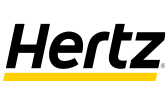Streamliningdataexchangesbetweeninsurersandlawfirmstodriveefficiency&improveclaimoutcomes
Codal partnered with ClaimDeck to design and build a litigation management platform from the ground up, streamlining workflows, centralizing data, and enabling powerful AI-driven insights. The result is a modern solution that improves collaboration between insurers and law firms while reducing inefficiencies in claims management.
REDUCED
implementation speed
BI-WEEKLY
feature releases
DATA POINTS PER CLAIM
1,400+

A cutting-edge litigation management platform, ClaimDeck streamlines the processing of insurance claims by automating legal workflows, visualizing insightful data, and improving communication between insurers and lawyers.

The challenge
- Claims leakage: This refers to the amount of unnecessary expenditures due to a claim’s process errors and inefficiencies.
- Unstructured data: When data is siloed across multiple sources, stored in its native format, and doesn’t follow a conventional data model, it becomes increasingly difficult for a growing organization to manage, activate, and share that data.

The solution
- Claim adjusters: Individuals hired by the plaintiff’s insurance company to investigate and handle the claim.
- Lawyers: Individuals hired by the insurance company to represent the plaintiff and work through the legal proceedings, under the claim adjuster’s oversight.
- Makes it easy to assign tasks and check the status of insurance claims.
- Centralizes data from multiple sources into a single location.
- Visualizes that data with customizable charts and graphs for actionable insights.
- Streamlines the auditing process by providing a full and detailed history of activities.
- Allows claim adjusters and lawyers to chat directly on the platform.
- Stores clean, well-structured data to support AI and ML capabilities down the line.

Comprehensive claim management: dashboards, task automation, and data visualization for insurance workflows

The result
- Easy for insurance companies and law firms to implement in hours, rather than months.
- Seamlessly integrable with other technologies, due to its open API infrastructure.
- Able to ensure data integrity by automatically capturing and maintaining over 1400 data points per claim.
- Continuously improving, with new features and updates released every two weeks.
- Cloud native, hosted on AWS.
- Secure, with an SOC 2 certification.
Industry
Platform / Partner
Related case studies


Transforming legal workflow management for corporate teams
Transforming legal workflow management for corporate teams


Architecting custom microservices to store & analyze massive amounts of medical device data
Architecting custom microservices to store & analyze massive amounts of medical device data


Empowering young women through an advisorship portal with a revamped UX/UI
Empowering young women through an advisorship portal with a revamped UX/UI


Optimizing storage operations with intelligent workflows
Optimizing storage operations with intelligent workflows


Streamlining vehicle maintenance through a custom, modern portal
Streamlining vehicle maintenance through a custom, modern portal


Empowering Simple Online Healthcare's global expansion with a new digital platform
Empowering Simple Online Healthcare's global expansion with a new digital platform


Elevating a B2B distributor’s eCommerce experience with a custom platform
Elevating a B2B distributor’s eCommerce experience with a custom platform


Revamping the backend system for Cost Plus Drugs to streamline operations & boost prescription fulfillment
Revamping the backend system for Cost Plus Drugs to streamline operations & boost prescription fulfillment

Curious about what’s possible?
If this case study sparked ideas, let’s talk. From strategy and experience design to unified commerce and product engineering, Codal helps ambitious brands turn vision into reality.
By submitting this form, you agree to be added to Codal's marketing database, where you can opt out at any time.